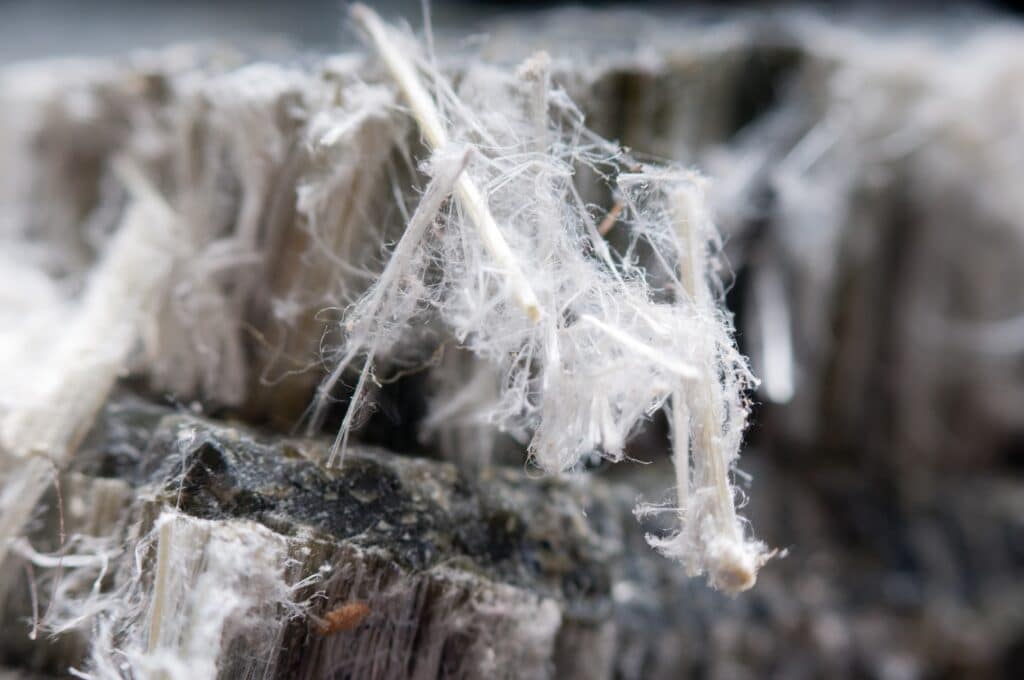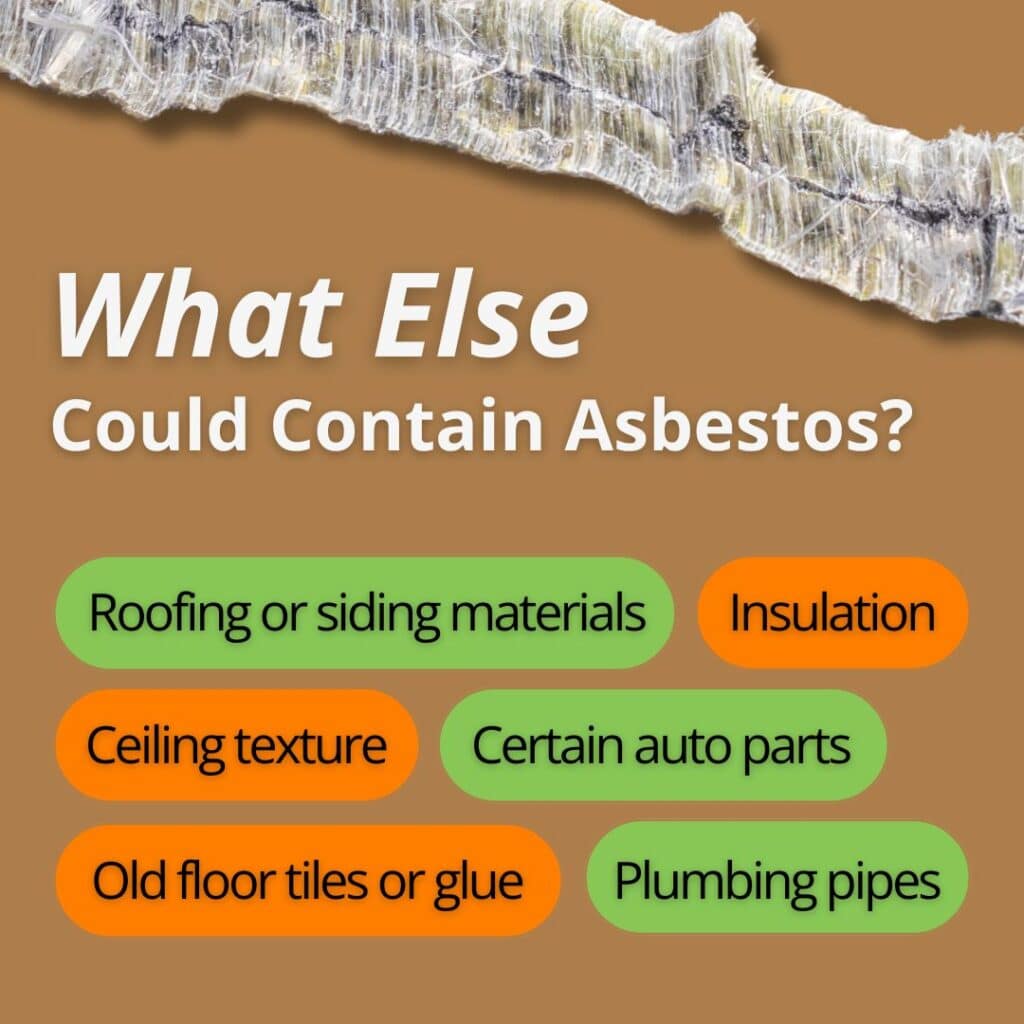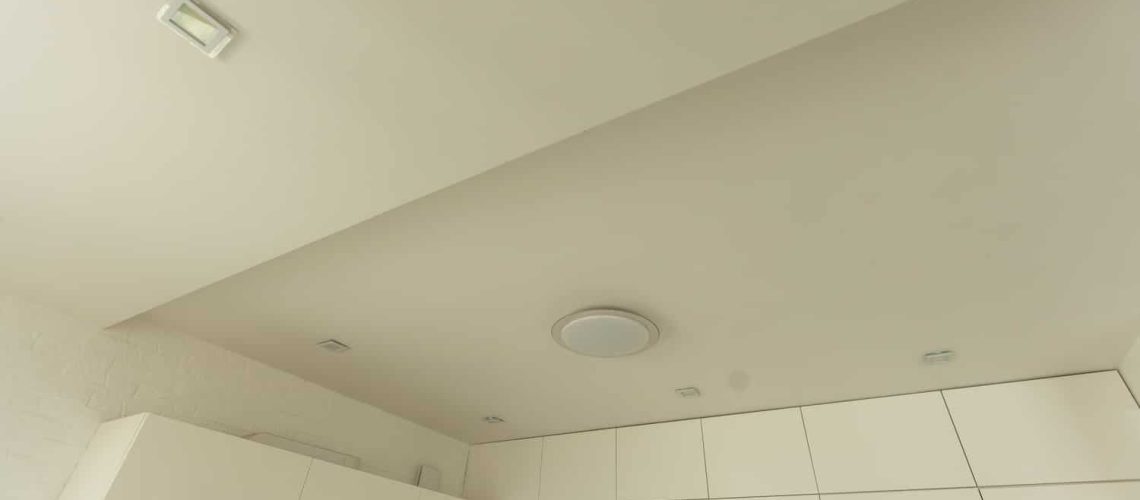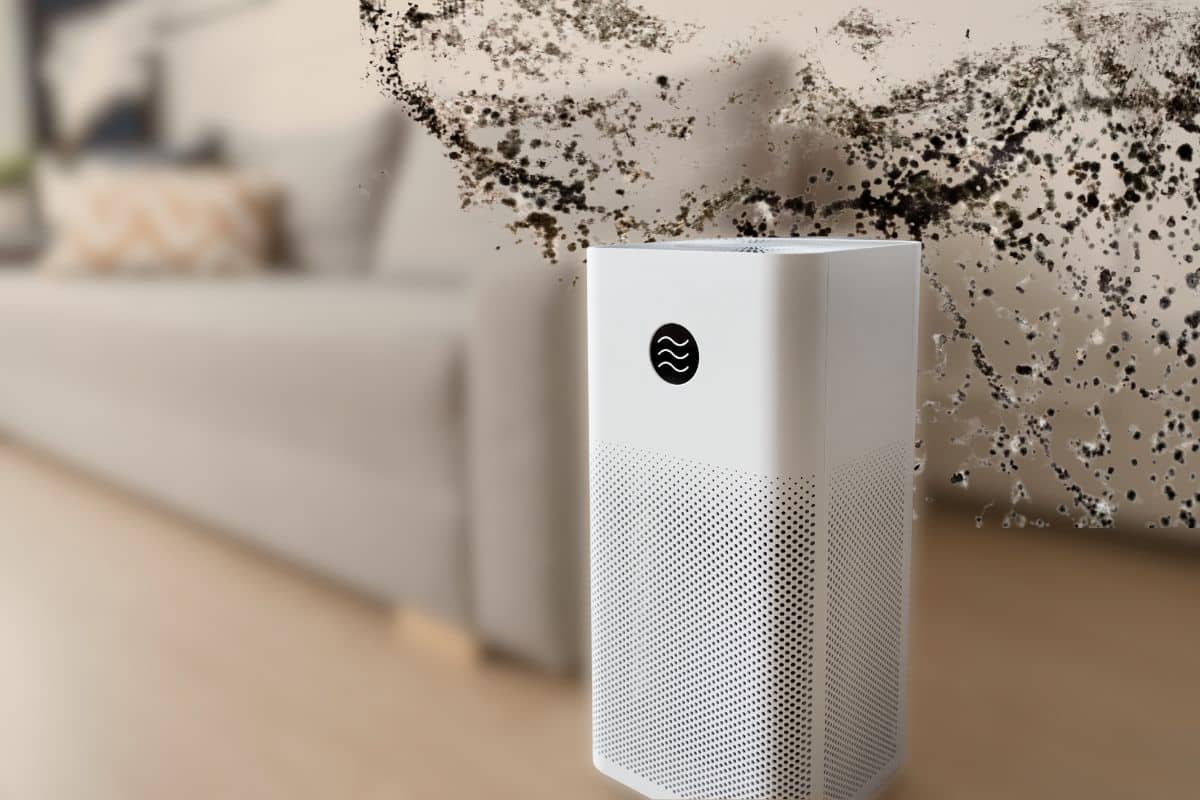If your home was built before the 1990s, it might be hiding something behind the walls or drywall: asbestos. In many cases, homeowners don’t even realize it’s there because it can be tricky to catch.
Asbestos was once a common ingredient in building materials, especially drywall and joint compounds. It helped with fire resistance and strength, but it was later found to put people at serious risk once disturbed.
Let’s talk through how to tell if your home might have asbestos and what to do before starting any projects
Table of Contents
ToggleWhen Asbestos Was Used in Drywall (And Why)
Asbestos became popular in construction materials starting in the 1940s and stayed in use for decades. It was most often added to:
- Joint compounds (the “mud” used to seal seams between drywall sheets)
- Drywall panels themselves, especially in older brands

It was cheap, durable, and fire-resistant—so it made sense at the time. But by the late 1970s, the health risks became too big to ignore. Breathing in asbestos fibers can lead to serious illnesses like mesothelioma and lung disease.
Then, manufacturing shifted, and asbestos was slowly phased out. Even though asbestos hasn’t been commonly used in new construction since the 1980s, it was never fully banned in the U.S., and leftover materials may have been used in construction well into the early ’90s.
So, if your home was built before 1990 (or remodeled using older materials) there’s a real possibility asbestos is still inside your walls.
Why You Can’t Always See It
Here’s the tricky part: drywall with asbestos in it doesn’t look any different from regular drywall. It could be sealed behind paint, hidden under wallpaper, or even sitting behind a newly remodeled surface.
Unless you have access to detailed building records or had professional testing done, there’s no way to know for sure just by looking.
In areas where many homes built in the mid-to-late 20th century are still standing strong, it’s not uncommon for older materials to go unnoticed until someone opens up a wall for repair or renovation.
Red Flags and Risk Factors
While asbestos doesn’t necessarily announce itself, there are a few clues that might raise suspicion.
- Your home was built before 1990 – especially in the 1950s–1980s range
- Drywall or joint compound looks worn or crumbling
- Past renovations were done without permits or testing
- You’re seeing repairs that look patched or uneven
These signs don’t confirm asbestos, but they’re good reasons to be cautious…especially if you’re planning work that might disturb the walls.

Why Disturbing Drywall Can Be Dangerous
Asbestos becomes a danger when it’s disturbed. Cutting, sanding, drilling, or tearing out drywall can release microscopic fibers into the air. Those fibers can stay suspended for hours and are easily inhaled.
This is why asbestos-related health risks are higher for people who work in construction or do DIY remodeling. Once they make it into your lungs, those fibers can cause scarring, breathing problems, and long-term disease—even years later.
So, if you’re thinking about taking on a demo project, make sure you know what you’re dealing with first.
How Testing Works
If you’re unsure whether your drywall contains asbestos, don’t guess, and definitely don’t scrape or break off a piece yourself. Professional testing or inspection is the safest route.
- On-site evaluation – A licensed inspector (not a general contractor) visits your home to assess any suspicious materials.
- Sample collection – Small, careful samples are taken from the drywall or joint compound without releasing fibers into the air.
- Lab analysis – Samples are tested at an accredited lab to confirm whether asbestos is present and at what percentage.
- Report and guidance – You get a detailed report and next steps—whether that’s remediation or simply leaving the material untouched and sealed.
Inspection Gator doesn’t perform asbestos removal, but we can help identify potential risks during a full home inspection. This is especially important if you’re buying or selling an older home!

Other Maintenance to Consider
If your home might have asbestos in the drywall, chances are it could be in other areas too. Common materials include:
- Old floor tiles or glue
- Ceiling texture (like popcorn ceilings)
- Insulation around pipes or ducts
- Roofing or siding on outbuildings
Even if you’re not planning to disturb these materials, it’s good to know what you’re dealing with. This is especially important if you’re preparing a home for sale or remodeling.
When to Call a Professional
- You’re buying or selling a home built before 1990
- You’re about to start demolition or wall repairs
- You see crumbling drywall or unexplained dust indoors
- A previous homeowner or contractor didn’t document the materials used
Home inspectors can flag potential problem areas during a general inspection. If anything looks suspicious, they may recommend further testing by a licensed asbestos inspector.
Inspection Gator serves homeowners across NE Texas, SW Arkansas, and SE Oklahoma. Our inspectors know what to look for in older construction. Whether you’re buying, selling, or updating, we’ll help you move forward safely.
Conclusion
Asbestos in drywall isn’t something most homeowners think about unless they need to. And while you can’t see it, that doesn’t mean it isn’t there. If your home was built before 1990 or you’re planning to renovate, don’t leave it to guesswork.
The smartest move is to schedule a full inspection and take the right precautions if anything looks off. Inspection Gator is happy to help connect you with the proper inspectors to assess your home for asbestos. If you’re buying or selling and need a full general home inspection, we’d be honored to help you through the buying or selling process.





